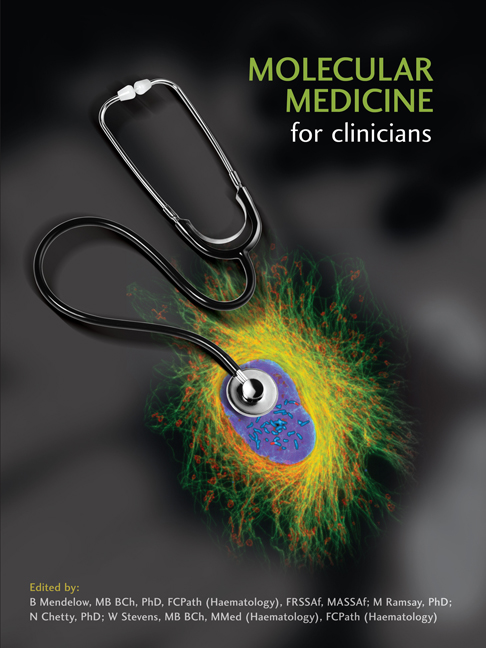Book contents
- Frontmatter
- Contents
- Foreword
- Acknowledgements
- Chapter 1 Introduction
- Keynote Essay 1: Defining Who We Are: DNA in Forensics, Genealogy and Human Origins
- Section 1 Principles Of Cellular And Molecular Biology
- Chapter 2 Digital Concepts in Molecular Medicine
- Chapter 3 The Anatomy and Physiology of the Genome
- Chapter 4 Molecular Cell Biology
- Chapter 5 Genetic Variation
- Chapter 6 Genes in Development
- Chapter 7 Tools of Molecular Medicine
- Keynote Essay 2: The Human Genome
- SECTION 2 MOLECULAR PATHOLOGY
- SECTION 3 MOLECULAR THERAPEUTICS
- SECTION 4 RESEARCH AND THE CONTINUING EVOLUTION OF MOLECULAR MEDICINE
- Glossary
- Contributors’ Biographies
- Source Material And Recommended Reading
- Permissions And Credits
- Index
Keynote Essay 2: The Human Genome
from Section 1 - Principles Of Cellular And Molecular Biology
Published online by Cambridge University Press: 04 June 2019
- Frontmatter
- Contents
- Foreword
- Acknowledgements
- Chapter 1 Introduction
- Keynote Essay 1: Defining Who We Are: DNA in Forensics, Genealogy and Human Origins
- Section 1 Principles Of Cellular And Molecular Biology
- Chapter 2 Digital Concepts in Molecular Medicine
- Chapter 3 The Anatomy and Physiology of the Genome
- Chapter 4 Molecular Cell Biology
- Chapter 5 Genetic Variation
- Chapter 6 Genes in Development
- Chapter 7 Tools of Molecular Medicine
- Keynote Essay 2: The Human Genome
- SECTION 2 MOLECULAR PATHOLOGY
- SECTION 3 MOLECULAR THERAPEUTICS
- SECTION 4 RESEARCH AND THE CONTINUING EVOLUTION OF MOLECULAR MEDICINE
- Glossary
- Contributors’ Biographies
- Source Material And Recommended Reading
- Permissions And Credits
- Index
Summary
‘It's a history book – a narrative of the journey of our species through time. It's a shop manual, with an incredibly detailed blueprint for building every human cell. And it's a transformative textbook of medicine, with insights that will give health care providers immense new powers to treat, prevent and cure disease.’ Francis Collins, Director of the National Human Genome Research Institute (NHGRI) at the NIH
Many believe that the human genome is the foundation of biomedicine in the twenty-first century. The 3 billion nucleotide base sequence has been described as the book of life, harbouring the ordered information for every gene that encodes the proteins that make up our cells. Information gleaned from the human genome and the genomes of pathogens will inform the future practice of molecular medicine and predisposition to disease.
During the 1980s the techniques for DNA manipulation and investigation were becoming established and at this time it was beginning to be possible to identify DNA variation or polymorphism. This was not done with the knowledge of DNA sequences, but by cutting DNA with restriction endo nucleases. The DNA fragments that were generated were separated according to size in a gel using an electric current and finally the individual segments of DNA were singled out by using specific DNA probes or sequences of known origin. Many pages of scientific journals were devoted to recording the small successes and in order to use the information, scientists had to contact the laboratories to request a sample of the probe DNA to be sent by post. Science was more personal, requiring interaction, discussion and collaboration, and discoveries took time.
At this time genetic maps had to be built, clone by overlapping clone, as part of the voyage of discovery. Scientists were like the sixteenth-century mariners with only the chromosomes in place of the stars to assist them in their navigation. It seemed little short of a miracle when the early successes in identifying disease-causing genes materialised.
Among the first disease loci to be mapped to chromosomal regions, bordered by two known markers, were chronic granulomatous disease and Duchenne muscular dystrophy on the X chromosome, and the cystic fibrosis and Huntington disease loci which were mapped to chromosomes 7q31 and 4p, respectively.
- Type
- Chapter
- Information
- Molecular Medicine for Clinicians , pp. 113 - 120Publisher: Wits University PressPrint publication year: 2008



